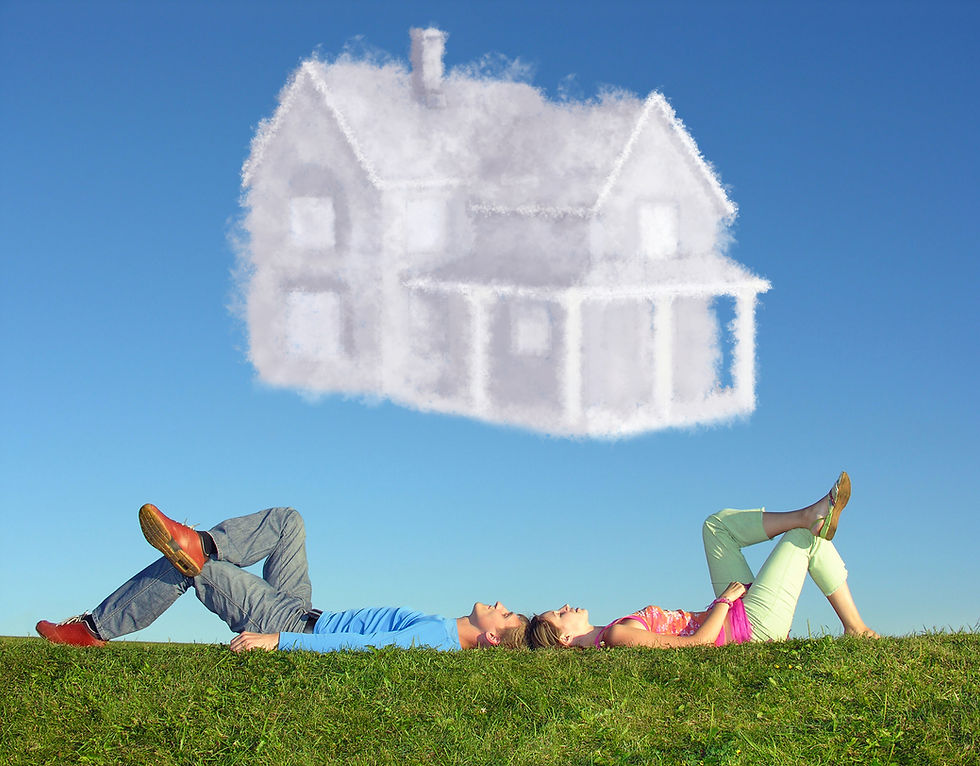Get Your Outdoors Warm-Weather Ready—Part 2: 7 Steps to Outfit the Outdoors
- Marni Jameson

- Jun 5, 2023
- 4 min read

Ahh May. The jackets are coming off. The bugs are coming out. Memorial Day is coming up, and your friends are coming over … unless, that is, your outside is not the place to be. Then your friends are going somewhere else.
If this is the year you finally are going to create an outdoor space you want to spend time in, and your friends do, too, let’s get it done. You will not be sorry. For the first two years that my husband and I lived in the Happier Yellow House, we never used, let alone enjoyed, our backyard. It was just a place the dogs went so they could track mud in. Then we talked to a landscaper who told us why it wasn’t an inviting place and we turned it into one.
Today our outdoor patio is the room — yes, I consider it a room — I use far more than any other in the house. I’m writing this column from there right now and would like to emphasize: if your outdoor space isn’t finished and friendly, you are missing out.
“If we learned one thing from Covid it is how much we value having a beautiful outdoor gathering place,” said interior designer Patricia Gaylor, of Las Vegas. However, many yards still fall short because “too often homeowners throw some patio furniture outside and expect the space to function and flow. They use the backyard as a drop zone, then wonder why nobody goes out there.”
Great outdoor spaces may look effortless, but they don’t just happen, adds Sarah Fishburne, director of trend and design for The Home Depot. “The secret to creating a great outdoor living space is to design it the same way you would an indoor space,” she said.
Though I hired a landscape designer to help me transform what I thought was a hopeless yard into my personal oasis, and I’m glad I did, these tips from Gaylor and Fishburne can help you create your own outdoor sanctuary in just seven steps:
1. Plan. Consider what you want to do in your yard, then “planogram it,” Fishburne said. “Think in zones and sketch out your plan. Identify distinct areas where you want to lounge, eat, or cook.” Think through how the areas relate. For instance, locate the grill so smoke isn’t blowing into the house or onto seated guests.
2. Furnish. Decide whether you want furniture that allows you to converse, lounge or dine, then map out an intentional furniture plan, factoring in traffic flow and clearances.
3. Coordinate. To create a cohesive look, pull the colors you use indoors into your outdoor areas, Gaylor said. That way you blur the lines between inside and out, making both living areas appear larger and unified. She also encourages homeowners to consider the exterior color of their homes when choosing an outdoor palette. Use natural colors and textures for background materials, like decks, fencing, and patios. Choose neutral colored furniture in shades of brown, tan or grey, then use bolder color and pattern in accent pieces like outdoor rugs, throw pillows and other accessories.
4. Equip. If you want to cook outside, you’ve never had a better selection of grills, outdoor cooking appliances and tech to support it all, Fishburne said. In addition to a range of natural gas, propane and pellet grills, outdoor air fryers and portable pizza that run on wood or gas are becoming popular outdoor fixtures. New technology, such as grilling apps that connect to meat meters and tell you when your food is done, is changing how we live outdoors. “Now you can monitor what’s on the grill with an app and enjoy your guests without having to stand over the grill,” Fishburne said.
5. Accessorize. “The biggest problem I see with outdoor spaces is that homeowners don’t finish the job,” Gaylor said. “They put out furniture and a barbecue and forget to accessorize.” Just as accessories make the outfit, they also make outdoor living spaces inviting. Bright pillows, lanterns for candles, area rugs made for outdoors, and container gardens are easy moves that add that finishing touch. But don’t junk the place up. (No watermelon or flamingo pillows.) Buy quality materials that will last, and make sure everything, from candles to cushions, has a purpose.
6. Flower-ize. Choose containers for flowers that blend with your backgrounds, then pack them full of bright, colorful flowers and plants. When planting a planter, Fishburne uses a layered method she calls “thrill, fill, and spill.” The thriller is the tall colorful statement in the middle. Depending on where you live, you might choose cosmos, delphinium, or hollyhock. Around that plant the filler, shorter flowering plants such as lobelia, petunias, pansies, and alyssum. Then surround that with something that cascades, such as potato vine, ivy, or creeping Jenny. “Everyone will think your containers were professionally done,” she said.
7. Light. Once you’ve outfitted your outdoors, elevate it with LED lighting set to a timer. Pathway lighting is important for safety, while highlighting certain elements of the yard, such as a fountain or tree, adds drama. Strings of market lights say party at my place. Though I am not recommending this, Fishburne mentioned that new technology is available that lets your lighting pulse to your music. Candles add that last bit of magic. While I like to put real candles in my lanterns, Fishburne likes the convenience of battery-operated candles that she presets to turn on and off the same time of day.
CAPTION: If you’re outdoor space isn’t begging you to be there, fix it.
Photo courtesy of Island Stone.




Comments